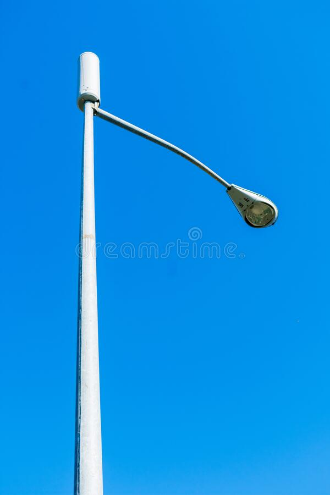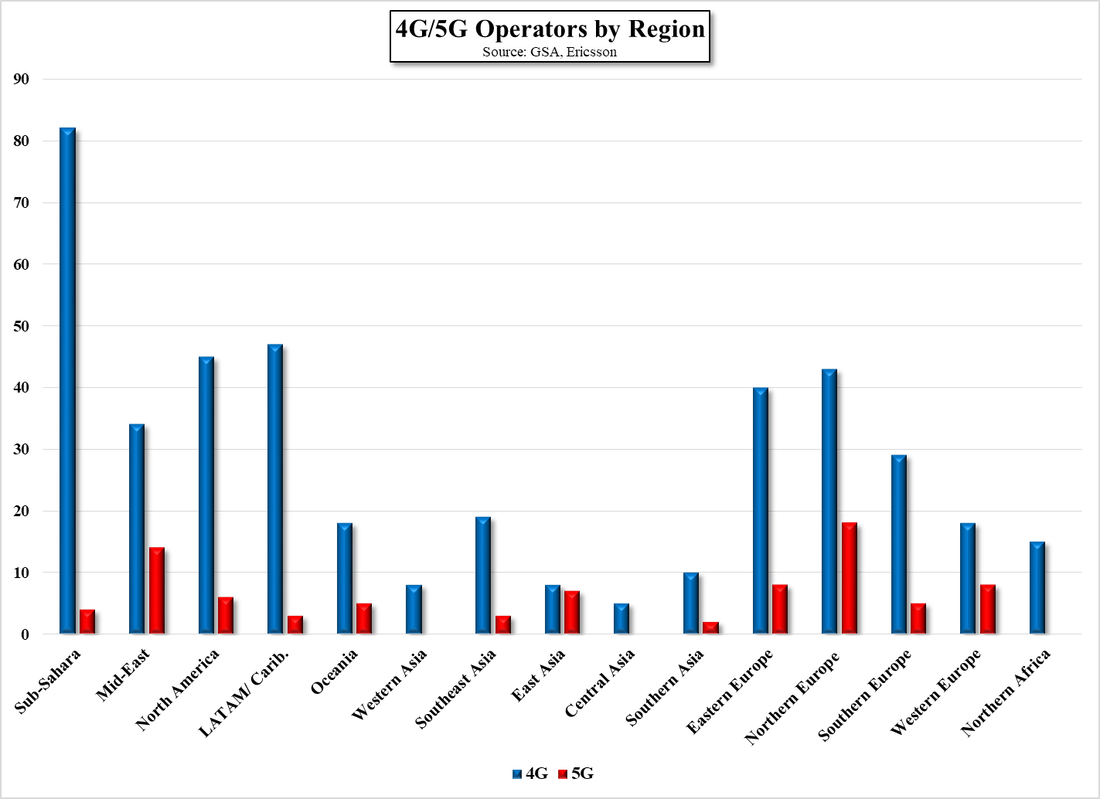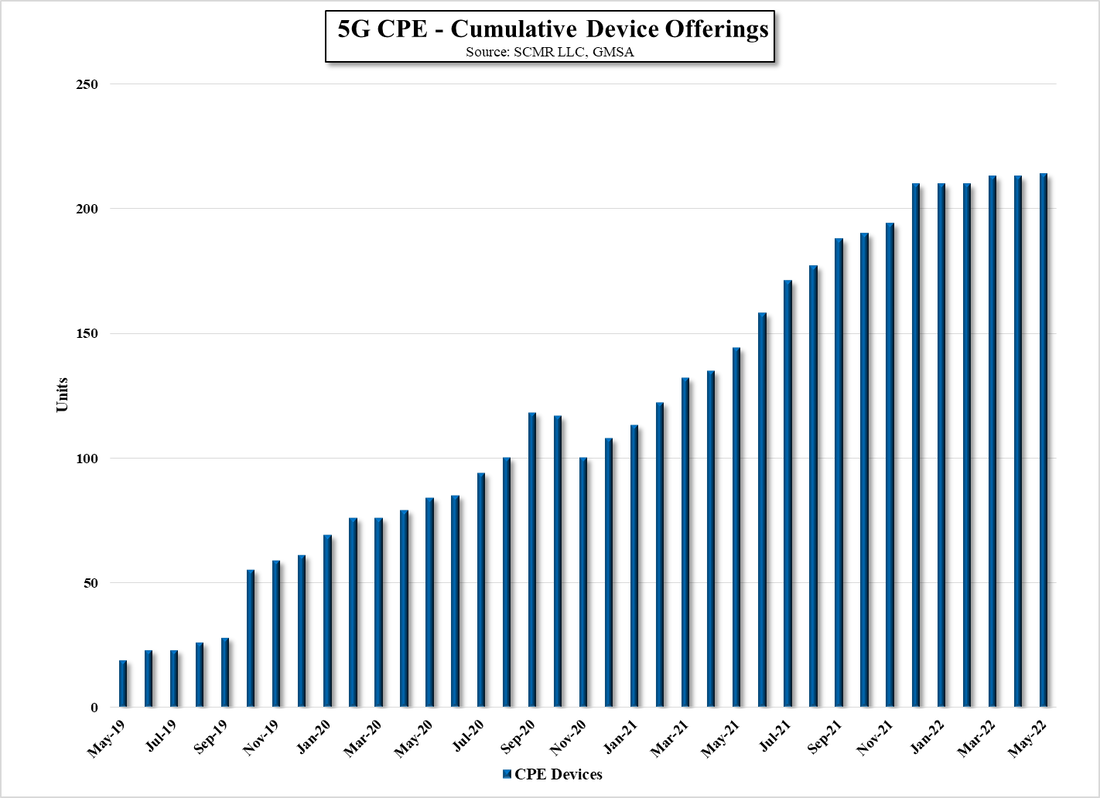Fun with Data – FWA
That said, there are issues that surround 5G, especially mmWave, and understanding what is necessary to create a FWA system in a home or business is essential. Instead of a connection to an external fiber line through an ONT (Optical Network Terminal) an FWA system has an antenna that is mounted outside of the home or office, with the height of the antenna determining the number of obstacles that might block a line-of-sight view of the 5G transmitting tower. The issue of signal blockage increases with the frequency being used by the 5G carrier, with low sub6 bands providing the greatest ability to be transmitted over large distances, but provide slower speeds, while higher frequencies, such as those used by mmWave systems, are more easily blocked by everyday items such as trees or building, but can provide much higher transmission speeds.
Before we go further, it is necessary to address the 5G distance limitations noted above, as they are different than those for 4G. 4G signals can travel ~ 10 miles if unblocked, which allows for a relatively sparse network of towers, while 5G signals can travel considerably less before they need to be captured, amplified, and retransmitted, and while 4G signal distances are well known, 5G transmission distances are very dependent on the frequency being used, which can vary considerably by carrier and location. The table below gives some indication as to the relative speeds and signal distance for each of the three primary 5G spectrum bands, although these vary considerably based on terrain, with mmWave urban distances as low as 250 feet. That said, in urban or suburban areas, small cell repeaters can be placed on existing street light or traffic poles, which allows for extending a grid network without the expense of unsightly towers in urban or local communities.
Given that FWA CPE equipment that is installed outside usually requires an expensive truck roll for initial provisioning, operators almost uniformly prefer indoor installations, which rely on installation by the customer and equipment delivery by mail rather than by the carrier, but the 5G CPE market being relatively new, has seen relative little growth in equipment vendors recently, after big spurts in 2020 and 2021. Both the 4G CPE and now the burgeoning 5G CPE equipment market are extremely fragmented, with no company controlling more than a 6.2% share for 4G and a 5.6% share for 5G, with the ‘other’ category representing 55.1% share for 4G and 47.7% share for 5G, leaving FWA equipment an open field for larger communications companies, and based on a study by Ericsson (ERIC), at the end of 2021 there were almost 90m FWA connections, which is expected to grow to over 100m this year and to more than double to 230m by 2027, or about 15% of all fixed broadband connections, while FWA data traffic represented almost 20% of global mobile data traffic by the end of last year. FWA traffic is estimated to grow by almost 5x by 2027.
While there are certainly challenges to the expansion of 5G generally, and some more specific to FWA, the need for speed, bandwidth and low latency across both commercial and residential customers is a fact of continued technological advances across a wide spectrum of components and CE products and a generational acceptance of the fact that life without high speed data is an uncomfortable situation for many consumers and an almost necessity for businesses. While wired broadband is well deployed in many environments, and mobile broadband is an integral part of life in almost every corner of the globe, FWA, particularly 5G FWA is the new kid on the block who has a Audi RS 7, while everyone in the neighborhood has a Honda CR-V. Sooner or later everyone else is going to want the same, laying the groundwork for 5G FWA, along with the soon-to-be hundreds of sensors that will be sending and receiving data from everything in homes and businesses. With 6G on the horizon a few years out, which will carry with it similar distance challenges, building out 5G infrastructure for both mobile and FWA is a necessary path for carriers who find the cost of laying cable or fiber to outlying customers too expensive to justify, and for those that are anticipating what their networks will need to support 10 years out. Resistance is futile…






 RSS Feed
RSS Feed